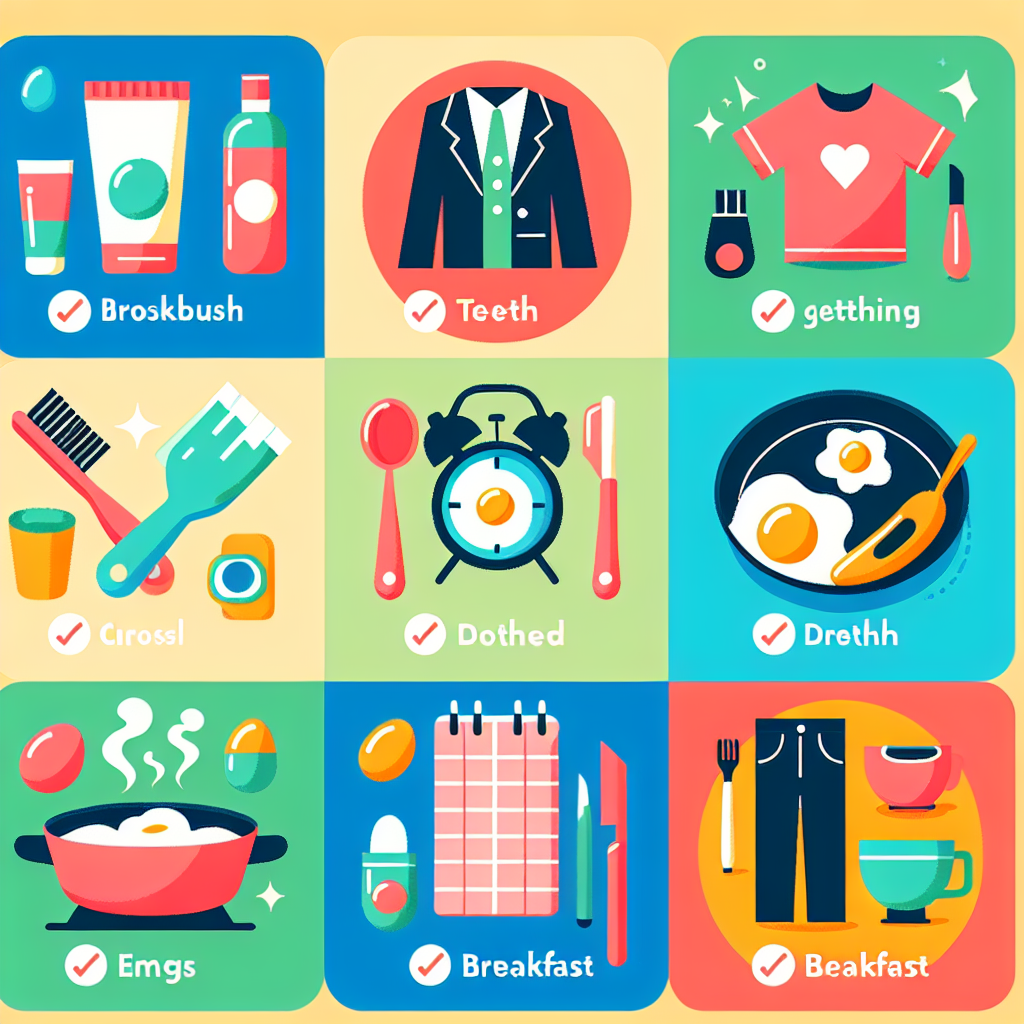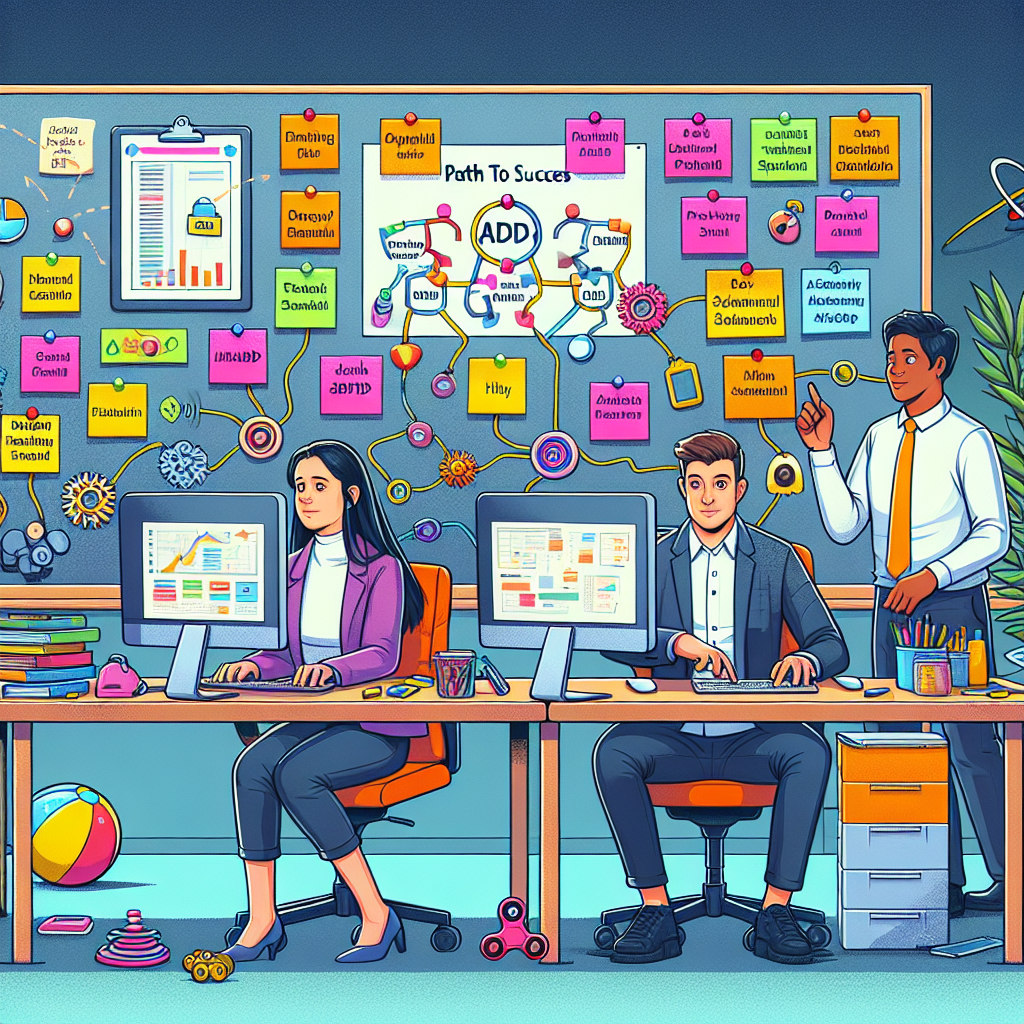
24 Hours with ADHD: Navigate Your Day Like a Pro
Introduction
Welcome to the wild and wonderful world of an ADHD day! If you’ve ever felt like your brain is a bustling highway with no speed limit, you’re not alone. Living with ADHD can feel like juggling flaming torches while riding a unicycle exciting, but also a bit chaotic. Today, we’re diving into how to navigate a full 24 hours with ADHD like a pro, from the moment you wake up to when you finally hit the pillow.
Did you know that ADHD is more than just a childhood condition? In fact, it affects around 4.4% of adults in the U.S., according to the American Psychiatric Association. That’s right ADHD doesn’t just vanish after high school; it evolves and continues to shape our daily lives. Understanding this is crucial for anyone looking to manage their symptoms effectively.
This blog post is packed with practical strategies and tips that can transform your daily routine into something manageable and even enjoyable. Whether you’re navigating work challenges, tackling school accommodations, or parenting a child with ADHD, we’ll cover everything from morning motivation to evening wind-down techniques.
So buckle up! We’re about to embark on an adventure through an ADHD day that will leave you feeling empowered and ready to take on whatever comes your way!

Understanding ADHD and Its Impact on Daily Life
ADHD, or Attention-Deficit/Hyperactivity Disorder, is like having a supercharged brain that can sometimes feel like it’s running on a rollercoaster track exciting, but also a bit chaotic. It’s not just about being hyper or having trouble focusing; it’s a complex condition that can affect every aspect of daily life.
Let’s break it down:
- Definition of ADHD: ADHD is a neurodevelopmental disorder that manifests in childhood and can persist into adulthood. It’s characterized by symptoms such as inattention, hyperactivity, and impulsivity.
- Common symptoms of ADHD in adults: For adults, signs of ADHD may include chronic procrastination, difficulty organizing tasks, forgetfulness in daily activities, and challenges in managing time effectively. Imagine trying to juggle five balls while riding a unicycle it’s tough!
- The impact of ADHD on daily routines: Living with ADHD means your day-to-day life can feel like an obstacle course. From getting out the door on time to staying focused during meetings or even managing relationships, the challenges are real. Adults with ADHD might find themselves constantly battling distractions or feeling overwhelmed by tasks that seem simple to others.
Did you know? According to recent studies, adults with untreated ADHD are more likely to experience issues related to work performance and interpersonal relationships.
The impact of ADHD on daily life isn’t just about the symptoms; it’s also about how these symptoms interact with various environments home, work, school and how they evolve over time. Understanding these dynamics is crucial for anyone navigating an ADHD day.
Research indicates that early diagnosis and intervention can significantly improve outcomes for individuals living with ADHD.
So whether you’re parenting a child with ADHD or managing adult ADHD yourself, knowing the ins and outs of this condition is essential. With the right strategies and support systems in place like joining local ADHD support groups, exploring various treatment options including behavioral therapy for ADHD, or utilizing effective focus techniques you can navigate your days more smoothly.
Remember: understanding is the first step toward thriving not just surviving in your unique journey with ADHD!
Morning Routine: Starting Your ADHD Day Right
Ah, the morning! That magical time when your bed feels like a warm hug and the world outside is just a little too bright. For those of us navigating an ADHD day, mornings can be particularly challenging. But fear not! With the right strategies, you can turn your mornings from chaotic to calm.
Effective Morning Strategies for Managing ADHD
- Set a Consistent Wake-Up Time: Your body loves routine. Try to wake up at the same time every day to regulate your internal clock.
- Create a Visual Schedule: Use colorful charts or apps to outline your morning tasks. Visual cues can make it easier to stay on track.
- Limit Morning Decisions: The fewer choices you have to make, the better! Lay out your clothes and prep breakfast the night before.
Time Management Tips for the Morning
- Use Timers: Set a timer for each task like brushing teeth or making coffee to keep yourself accountable and focused.
- Your Best Friend: The Checklist: Write down your morning tasks and check them off as you go. It’s like a mini victory parade!
- Prioritize Tasks: Identify what absolutely needs to get done versus what can wait. Focus on essentials first.
Coping Techniques to Reduce Morning Stress
- Breathe Deeply: Start with a few minutes of deep breathing or mindfulness meditation. This sets a calm tone for your ADHD day.
- Incorporate Movement: A quick stretch or some light exercise can help shake off grogginess and boost focus.
- Avoid Screen Time: Try not to dive into emails or social media right away; they can be overwhelming first thing in the morning.
The impact of ADHD on daily life can be significant, but starting your day with intention makes all the difference. Remember, managing ADHD is about finding strategies that work for you!

Your mornings don’t have to be frazzled messes of forgotten tasks and frantic searches for lost keys. With these tips in hand, you’re ready to tackle each new day with confidence! So grab that coffee (or tea) and let’s make today an amazing ADHD day!
Workplace Strategies for Adults with ADHD
Welcome to the wild world of work, where deadlines loom like storm clouds and distractions buzz around like pesky mosquitoes! For adults navigating an ADHD day, finding effective strategies to manage work life can feel like trying to herd cats. But fear not! With the right tools and techniques, you can turn your workplace into a productivity paradise.
Dealing with Distractions at Work
First up, let’s tackle distractions. You know that moment when your coworker’s pen clicking suddenly becomes the most fascinating thing in the universe? Yeah, we’ve all been there. Here are some tricks to minimize those pesky interruptions:
- Create a distraction-free zone: Use noise-canceling headphones or play soft background music to help drown out disruptive sounds.
- Time blocking: Allocate specific time slots for focused work and breaks. The Pomodoro Technique 25 minutes of work followed by a 5-minute break can be a game changer.
- Digital detox: Limit notifications on your phone or computer during work hours. Trust us, that email can wait!
School Accommodations for Adults Transitioning to the Workplace
If you’re transitioning from school to the workforce, remember that many of those helpful accommodations still apply! Here’s how:
- Request flexible scheduling: If mornings are tough, see if you can start later in the day.
- Utilize organizational tools: Tools like planners or apps can help keep your tasks organized and visible.
- Seek mentorship: Connecting with someone who understands ADHD can provide guidance and support as you navigate new challenges.
Productivity Tips Tailored for ADHD Sufferers
No more “I’ll do it later” excuses! Here are some tailored productivity tips to keep you on track throughout your ADHD day:
- Break tasks into smaller chunks: Large projects can be overwhelming, so divide them into bite-sized pieces and celebrate small wins!
- Create visual reminders: Use sticky notes or digital reminders for important tasks out of sight should not mean out of mind!
- Praise yourself!: Give yourself credit for completing tasks, no matter how small. Positive reinforcement is key in managing ADHD effectively.
The workplace doesn’t have to be a battleground; with these strategies in hand, you can conquer your daily tasks like the superhero you are! So gear up and embrace your unique journey through each ADHD day. Remember, it’s all about finding what works best for you and having a little fun along the way!
Lunchtime and Social Interactions: Navigating Relationships with ADHD
Ah, lunchtime! That glorious hour when the workday pauses, and the world opens up for social interactions. But for those living with ADHD, this time can feel like navigating a minefield of social anxiety and overwhelming stimuli. Fear not, my friend! Here are some strategies to help you manage those lunch breaks like a pro.
Coping with Social Anxiety in Social Settings
Social settings can be tricky for anyone, but they can feel like climbing Everest for someone dealing with ADHD symptoms. The buzzing conversations, clinking cutlery, and the pressure to engage can lead to a sensory overload. Here are some tips:
- Choose Your Company Wisely: Surround yourself with understanding friends or colleagues who know about your ADHD day and can help ease your anxiety.
- Practice Active Listening: Focus on what others are saying instead of worrying about how you will respond. This helps shift your attention away from any self-doubt.
- Set Time Limits: If large groups overwhelm you, consider shorter lunch dates or even solo lunches where you can recharge.
The Role of Support Groups in Managing Relationships
You don’t have to navigate this journey alone! Joining an ADHD support group can provide a safe space where you can share experiences and learn from others in similar situations. Here’s why they rock:
- Shared Experiences: Hearing how others cope with similar challenges fosters connection and reduces feelings of isolation.
- Tangible Strategies: Members often share practical tips that have worked for them think of it as a treasure trove of ADHD strategies!
- Moral Support: Knowing that others understand your struggles creates a sense of belonging that is invaluable.
Tips for Effective Communication During Lunch Breaks
Navigating conversations during lunch doesn’t have to be daunting! Here are some effective communication tips that can enhance your interactions:
- Use Visual Cues: If you’re struggling to keep track of the conversation, don’t hesitate to use visual aids or notes to help guide discussions.
- Acknowledge Interruptions: If you find yourself zoning out or getting distracted, gently acknowledge it. A simple “Sorry, I lost my train of thought” can ease tension.
- Create “Go-To” Topics: Prepare a few light topics in advance like recent movies or funny memes to keep conversations flowing smoothly without added pressure.

Afternoon Focus Techniques: Staying Productive After Lunch
Ah, the dreaded post-lunch slump. It’s like a cozy blanket of lethargy wraps around you, and suddenly all those ADHD symptoms come rushing back. But fear not! With a few nifty techniques, you can turn that afternoon fog into a productivity powerhouse.
Improving Concentration in the Afternoon Hours
First things first: let’s tackle that concentration issue. Here are some tips to help you stay sharp:
- The Pomodoro Technique: Work for 25 minutes, then take a 5-minute break. Rinse and repeat! This method can be particularly effective for managing ADHD.
- Set Clear Goals: Write down what you need to accomplish before diving into your tasks. This will help you stay focused on the prize instead of getting lost in the weeds.
- Create a Distraction-Free Zone: Find a quiet spot or use noise-canceling headphones to block out distractions. Your brain will thank you!
Mindfulness and Meditation Practices for Focus Enhancement
If your mind is racing faster than a cheetah on espresso, it might be time to hit pause and practice some mindfulness. Here are some quick techniques:
- Breathe Deeply: Take a few minutes to focus on your breath inhale for four counts, hold for four, exhale for four. Repeat until zen.
- Meditation Apps: Consider using apps like Headspace or Calm. They offer guided sessions that can help improve concentration and reduce anxiety perfect for coping with ADHD.
- Mindful Walking: Take a short walk outside while focusing on your surroundings. This not only boosts your mood but also helps clear your mind.
Naturally Boosting Energy Levels Without Medication Options
No caffeine? No problem! Here are some natural ways to boost your energy levels during that afternoon slump:
- Hydrate: Sometimes fatigue is just dehydration in disguise. Keep water handy and sip throughout the day.
- Healthy Snacks: Opt for protein-packed snacks like nuts or yogurt instead of sugar-laden treats that lead to crashes.
- A Quick Stretch: Stand up and do some light stretching or yoga poses. It’s amazing how a little movement can wake up those sleepy neurons!
Evening Wind Down: Managing Stress and Preparing for Tomorrow
As the sun dips below the horizon, it’s time for our ADHD warriors to shift gears and prepare for a restful night. The evening wind down is not just about putting on your pajamas and binge-watching your favorite show; it’s a crucial part of managing your ADHD day. Think of it as your personal superhero cape that helps you tackle tomorrow with confidence!
Stress Management Techniques to End Your Day Positively
First things first, let’s talk about stress management. After a long day navigating the challenges of ADHD, it’s essential to find ways to decompress. Here are some techniques that can help:
- Deep Breathing: Take a few minutes to practice deep breathing. Inhale deeply through your nose, hold for a moment, and exhale slowly through your mouth. This simple act can reduce anxiety and help you feel grounded.
- Journaling: Spend some time reflecting on your day. Write down what went well, what you struggled with, and any thoughts swirling in your head. It’s like decluttering your mental attic!
- Gentle Movement: Engage in light stretching or yoga. Not only does it help release physical tension, but it can also clear mental fog.
The Importance of a Consistent Evening Routine for Adults with ADHD
A consistent evening routine acts like a trusty GPS guiding you toward a smoother tomorrow. Establishing rituals can help signal to your brain that it’s time to wind down.
- Set a Fixed Bedtime: Aim to go to bed at the same time each night. This helps regulate your internal clock and improves sleep quality essential for managing ADHD symptoms.
- Create a Relaxing Environment: Dim the lights, put on some soothing music, or light a candle (safely!). A calm environment can make all the difference in signaling relaxation.
- Avoid Screens Before Bed: Yes, scrolling through TikTok might seem like self-care, but blue light exposure can interfere with sleep. Try reading or listening to an audiobook instead!
Coping Strategies for Managing Evening Distractions and Anxiety
The evening hours may bring their own set of distractions from unfinished tasks nagging at you like pesky mosquitoes to anxiety about tomorrow’s responsibilities. Here’s how to keep those distractions at bay:
- Limit To-Do Lists: Instead of overwhelming yourself with endless tasks for the next day, pick three priorities that truly matter. This keeps anxiety in check while boosting productivity!
- Meditation or Mindfulness Exercises: Spend just five minutes focusing on your breath or practicing mindfulness techniques before bed. It’s like giving your brain a mini-vacation!
- Prepare for Tomorrow: Lay out clothes or pack lunch the night before. This simple act reduces morning chaos and helps ease anxiety about starting another ADHD day.

Conclusion: Embracing Your Unique Journey with ADHD
As we wrap up our exploration of a typical ADHD day, it’s essential to recognize that living with ADHD is not just about navigating challenges it’s about embracing your unique journey. Each person’s experience is different, and understanding ADHD can help you find the strategies that work best for you.
Many people think of ADHD as merely a disorder of inattention or hyperactivity. However, it’s crucial to understand that ADHD encompasses a wide range of symptoms and challenges, particularly in areas like executive function, which includes planning and organization. This means that while one person might struggle with impulsivity, another might find time management to be their greatest hurdle.
Did you know? According to CHADD, “ADHD is a complex neurodevelopmental disorder that affects millions of people worldwide.” This highlights the importance of ADHD awareness day, which aims to educate the public about the various facets of this condition.
Strategies for Success
Managing ADHD effectively requires a toolkit filled with strategies tailored to your needs. Here are some practical approaches:
- Behavioral Therapy: Consider working with a therapist who specializes in behavioral therapy for ADHD. They can provide tailored strategies to help manage symptoms.
- Coping Techniques: Mindfulness and meditation are not just buzzwords; they can significantly improve concentration and reduce stress levels over time.
- ADHD Support Groups: Connecting with others who understand your challenges can provide emotional support and practical advice.
- Natural Remedies: Explore natural remedies for ADHD that may complement traditional treatment options.
Acknowledge Your Progress
No matter where you are on your journey, it’s important to acknowledge your progress. Whether it’s learning how to cope with distractions at work or finding the right medication options, each step forward is a victory worth celebrating.
Your Next Steps
If you’re feeling overwhelmed by managing ADHD symptoms or looking for effective treatment options, consider reaching out for professional help. There are many resources available for both adults and children dealing with ADHD. Remember, you’re not alone on this journey!


